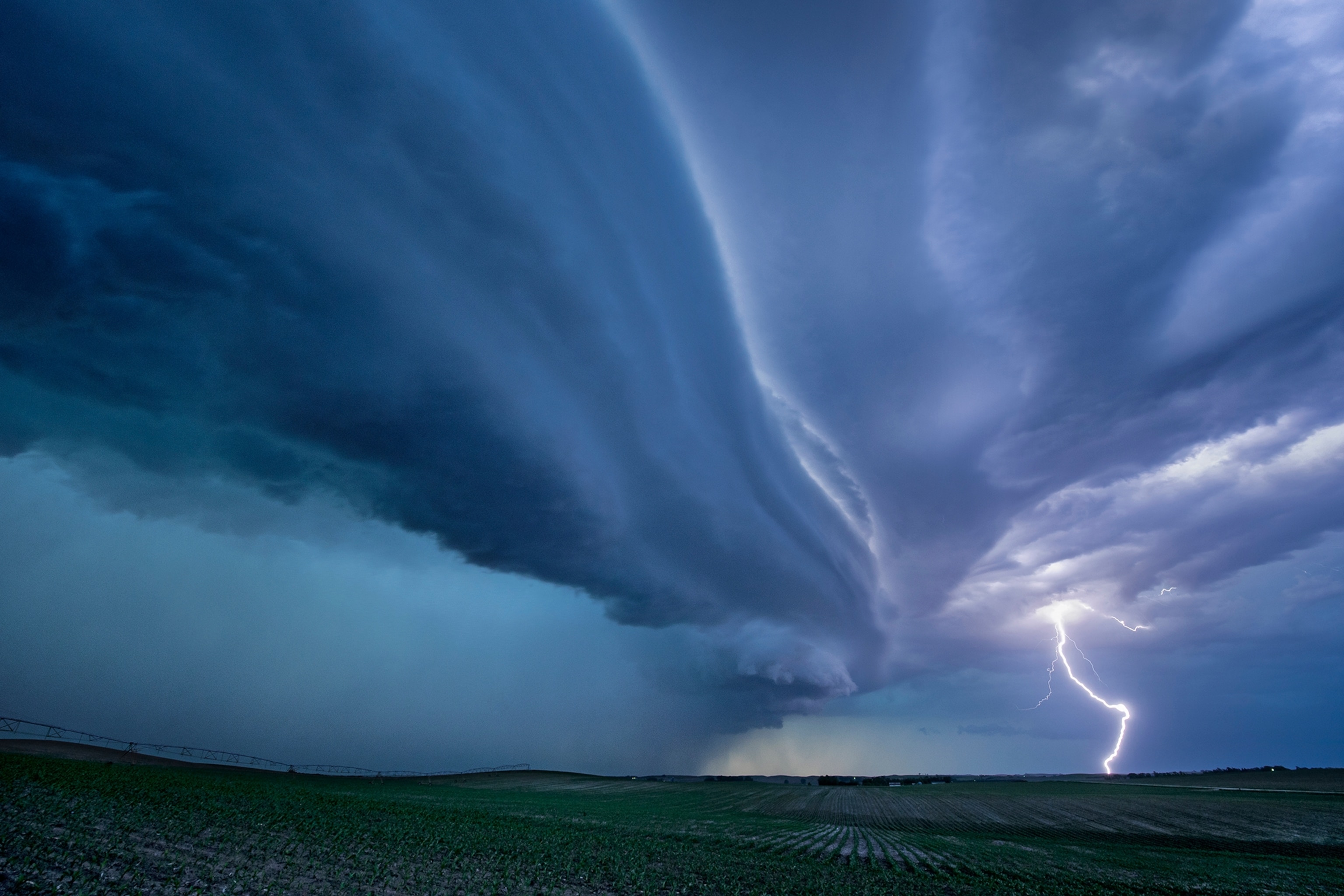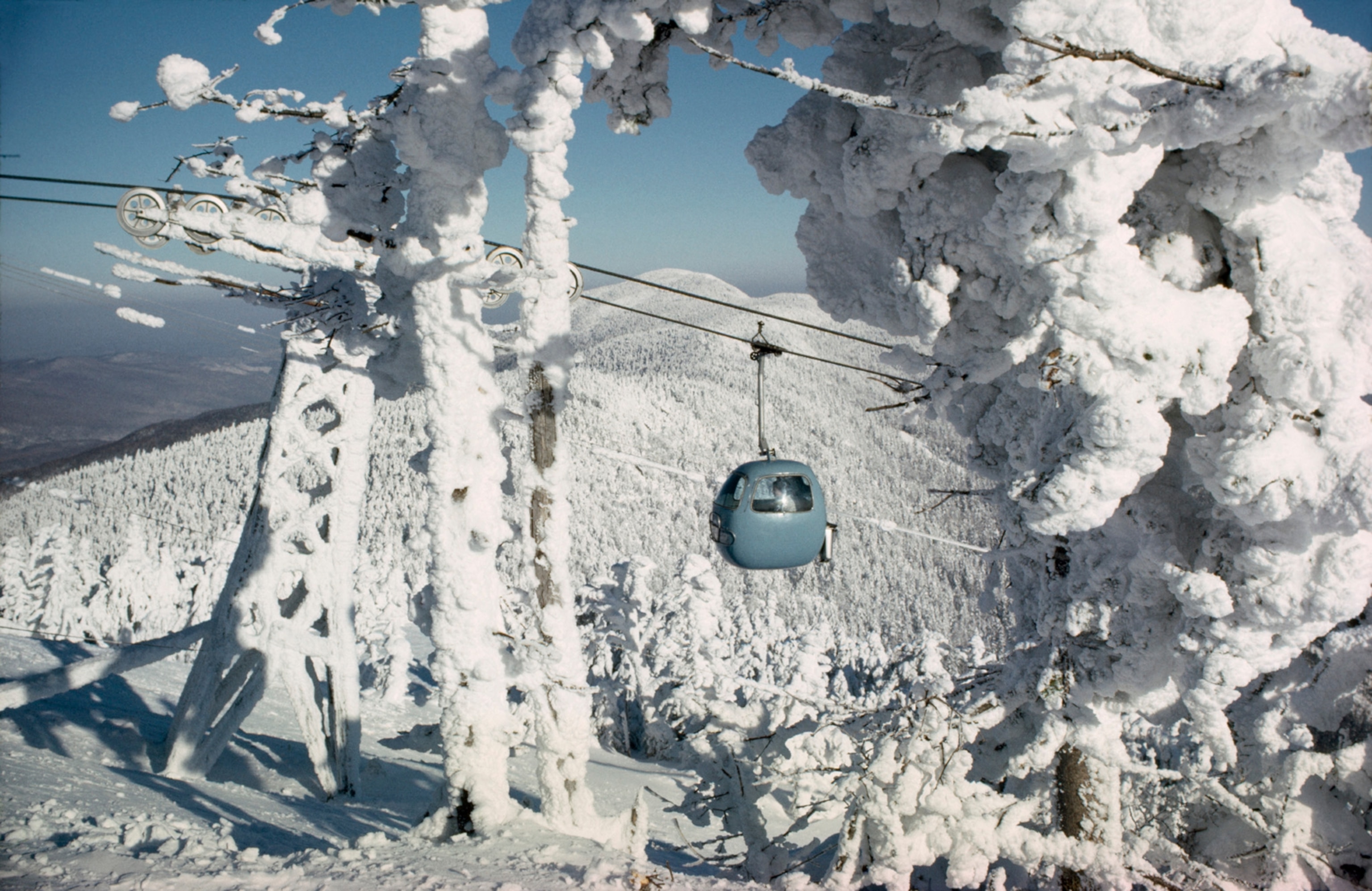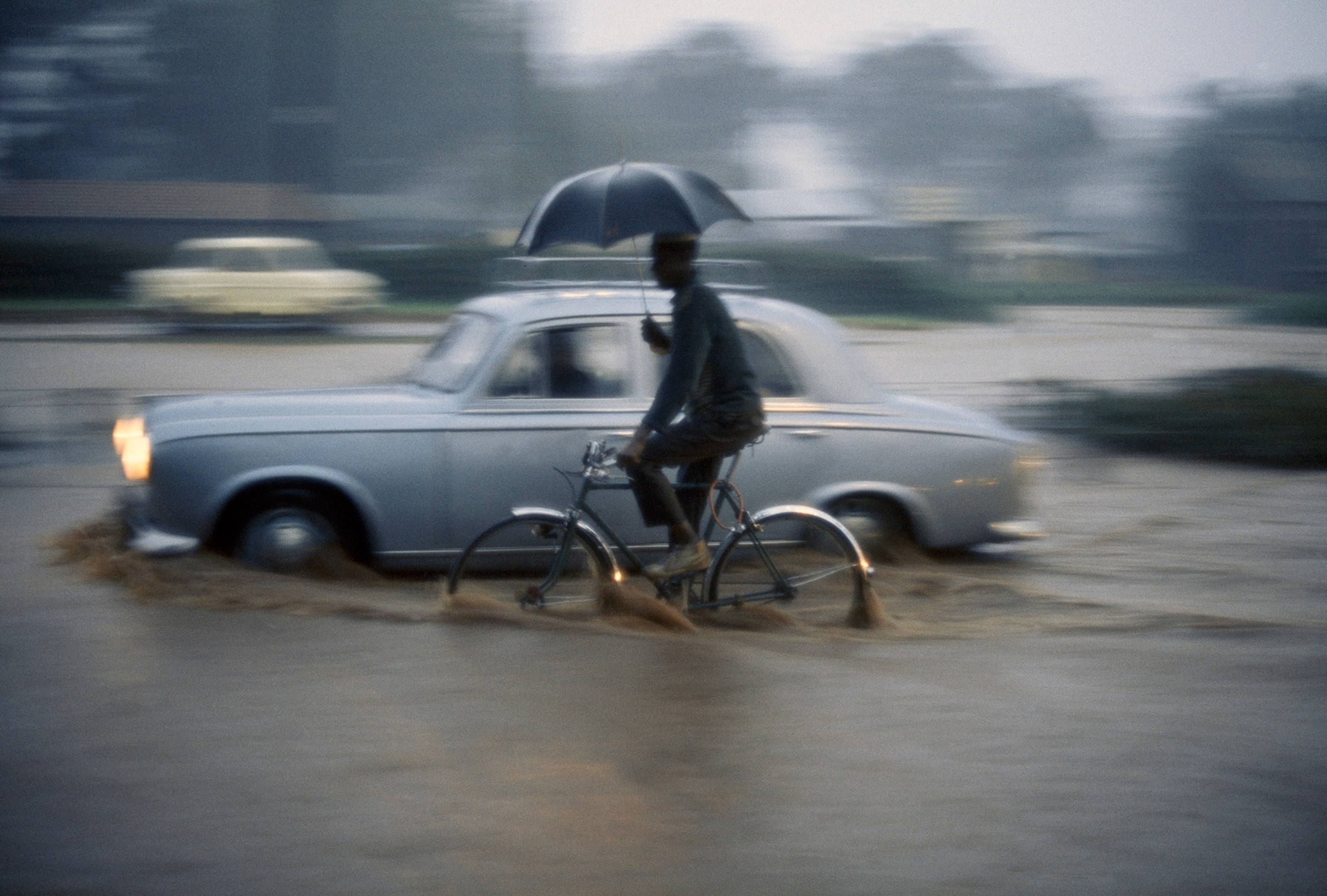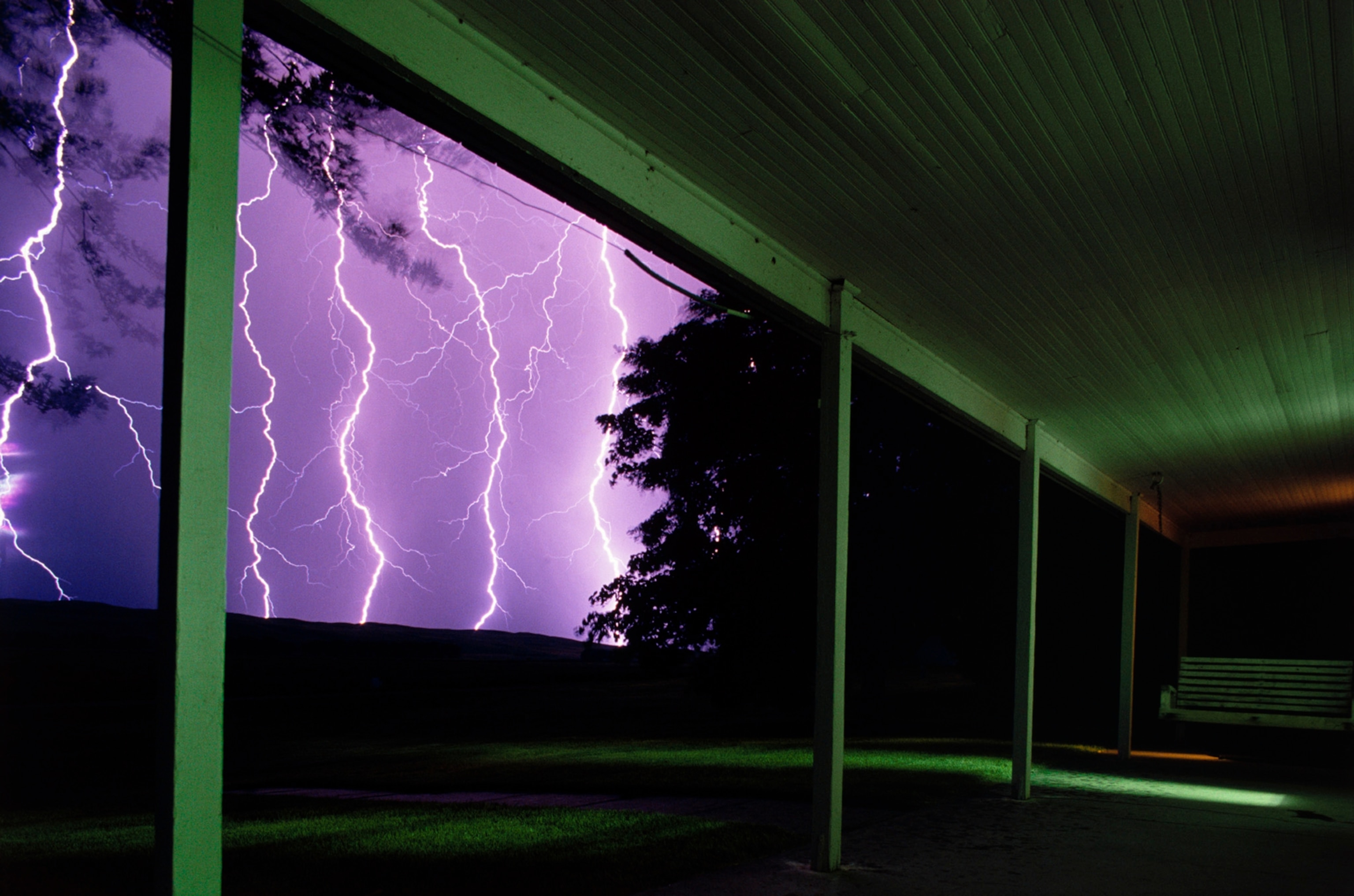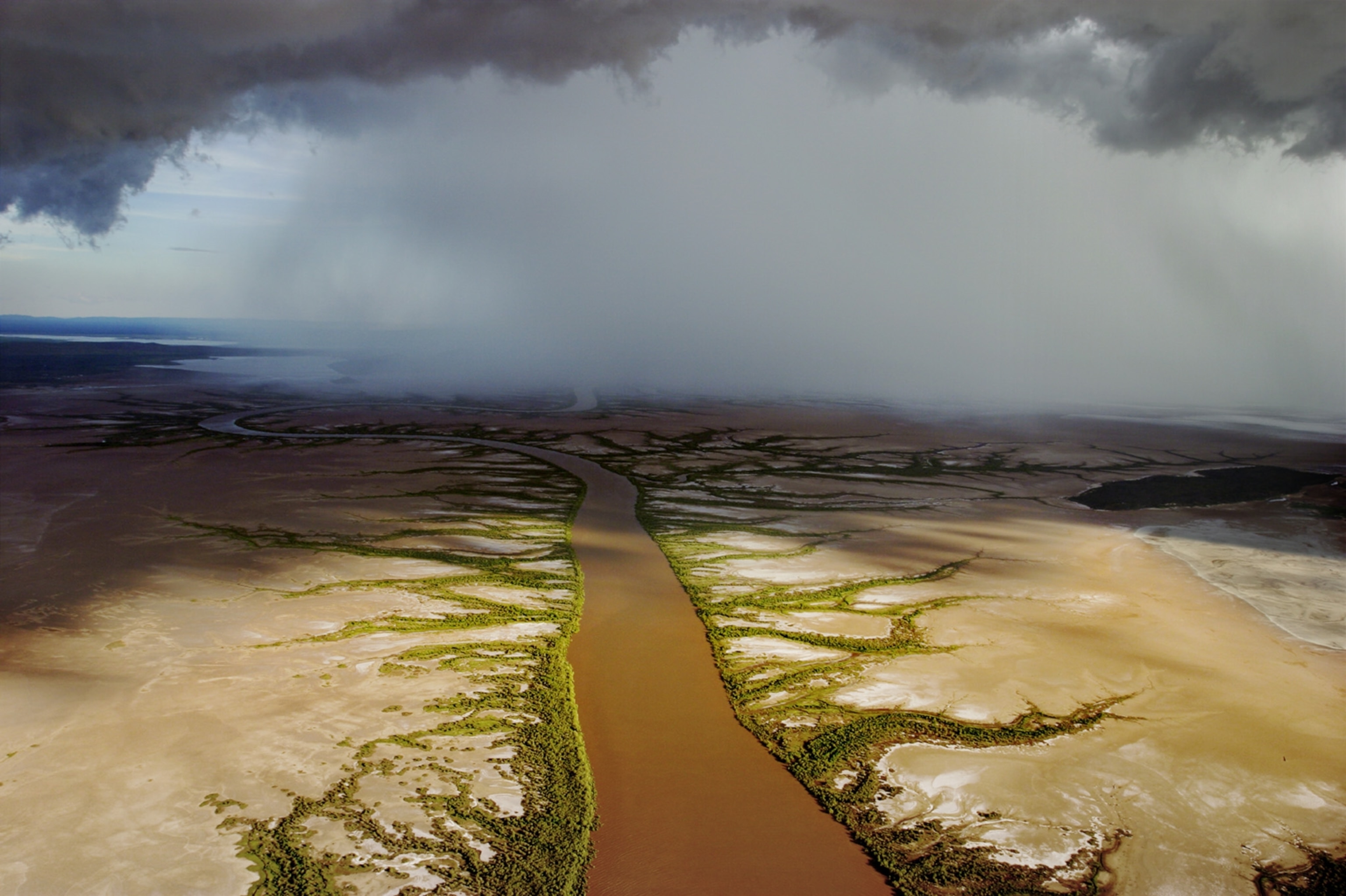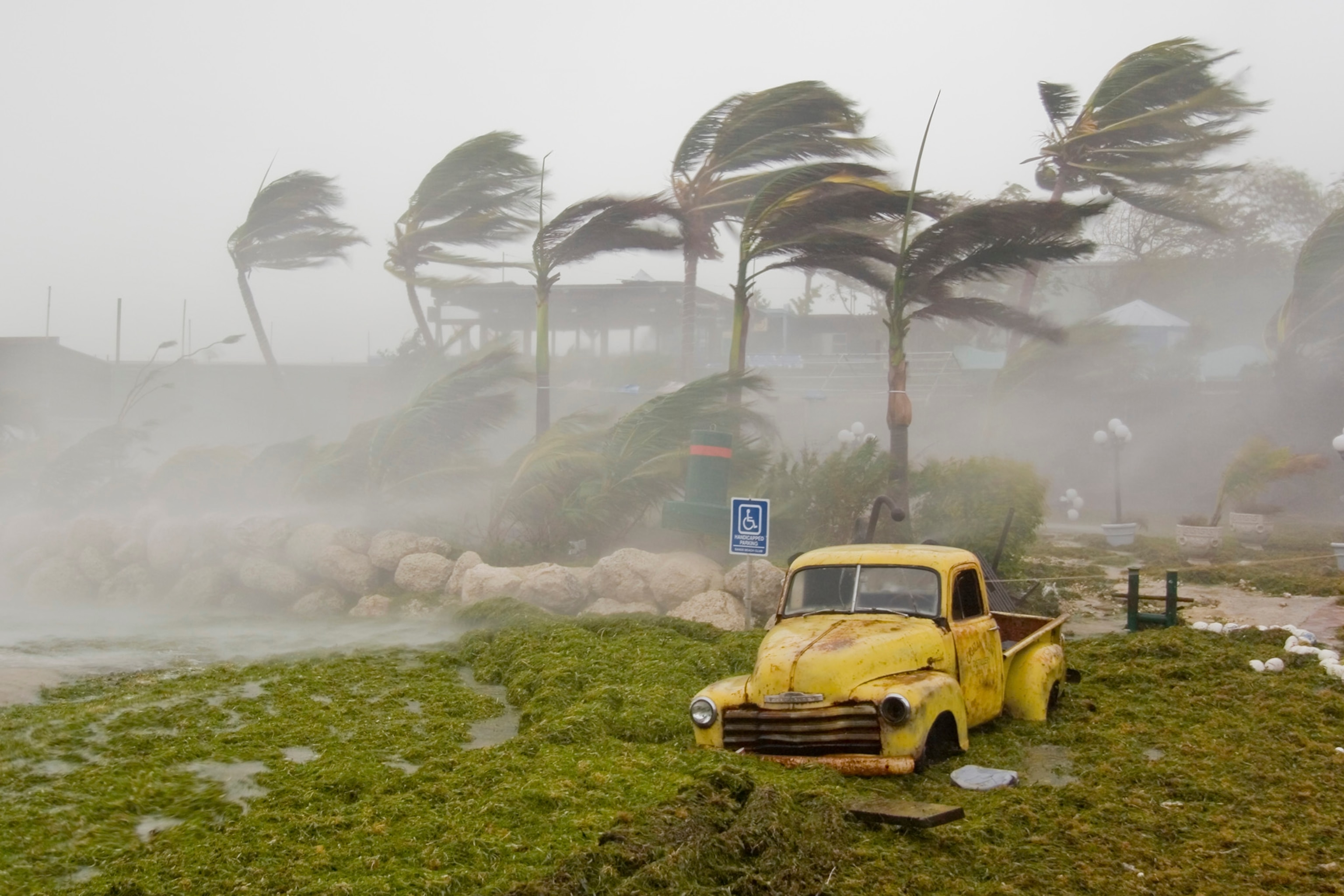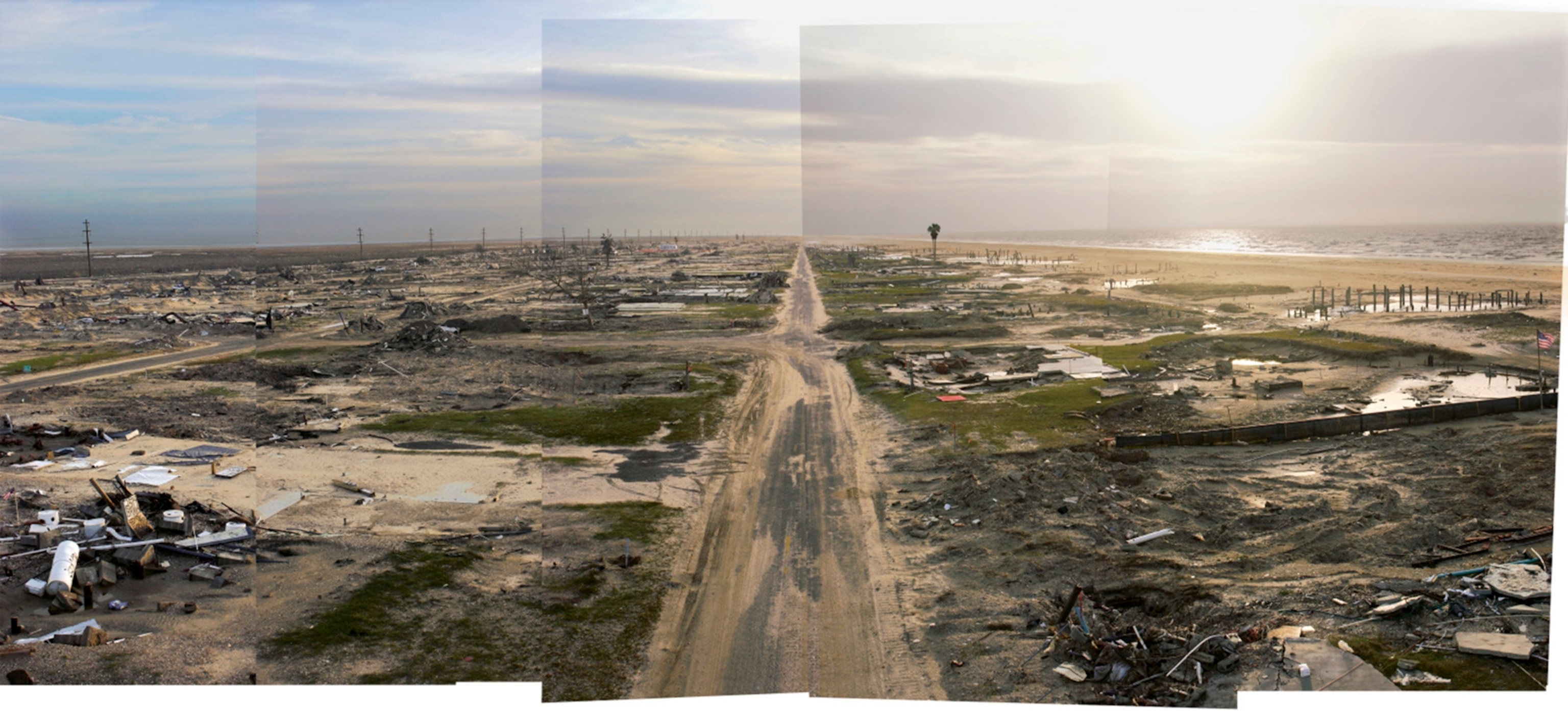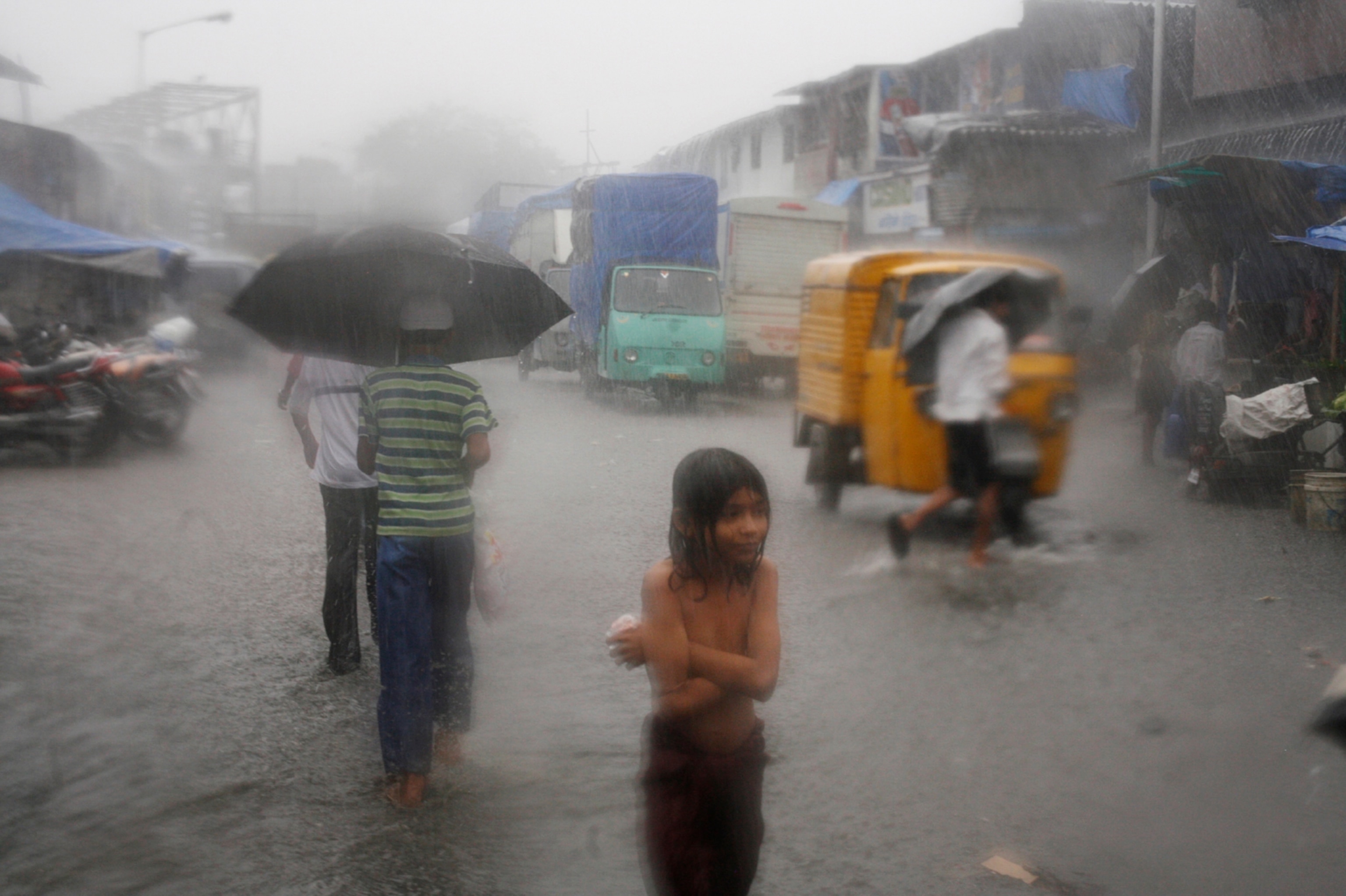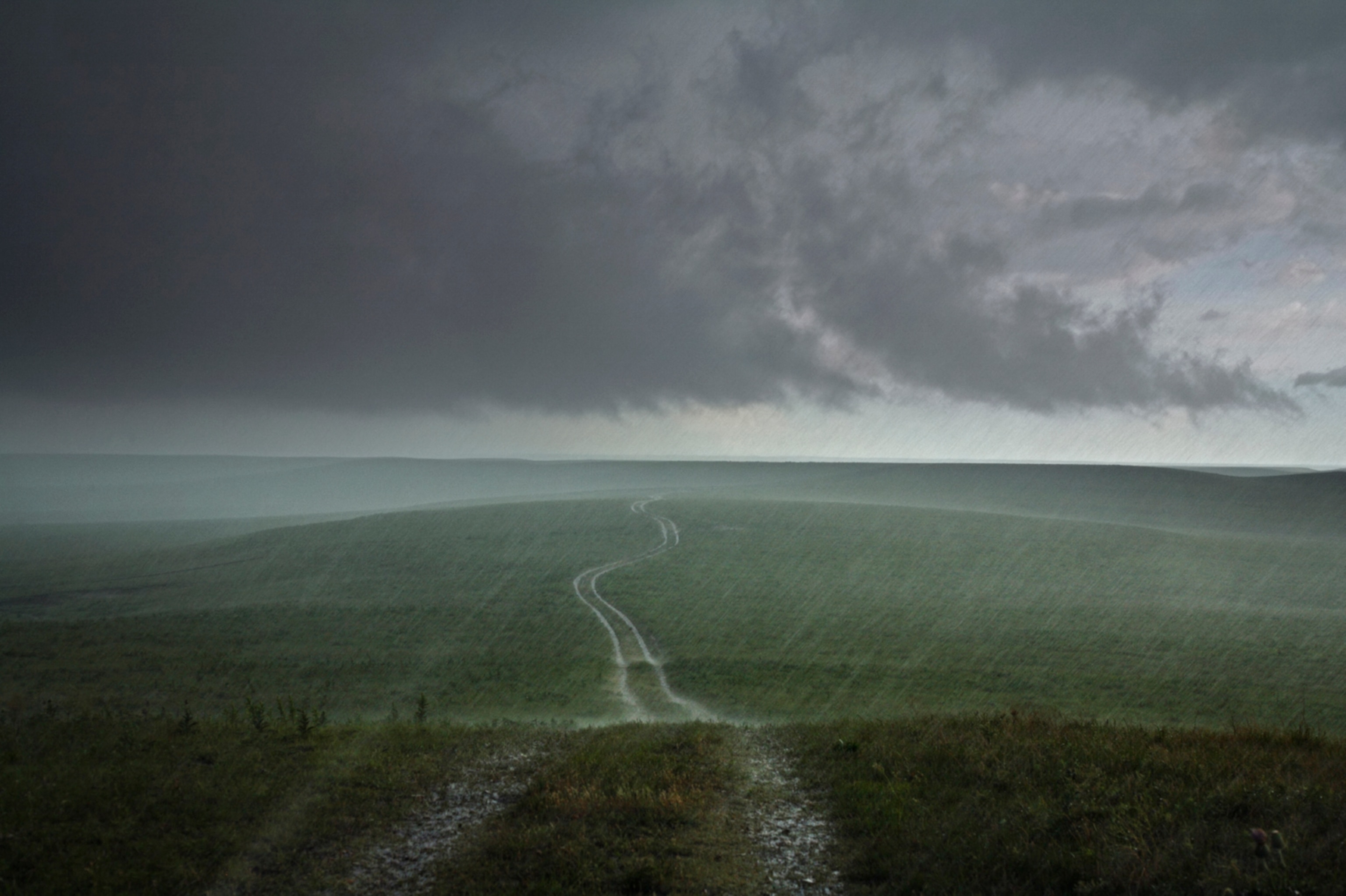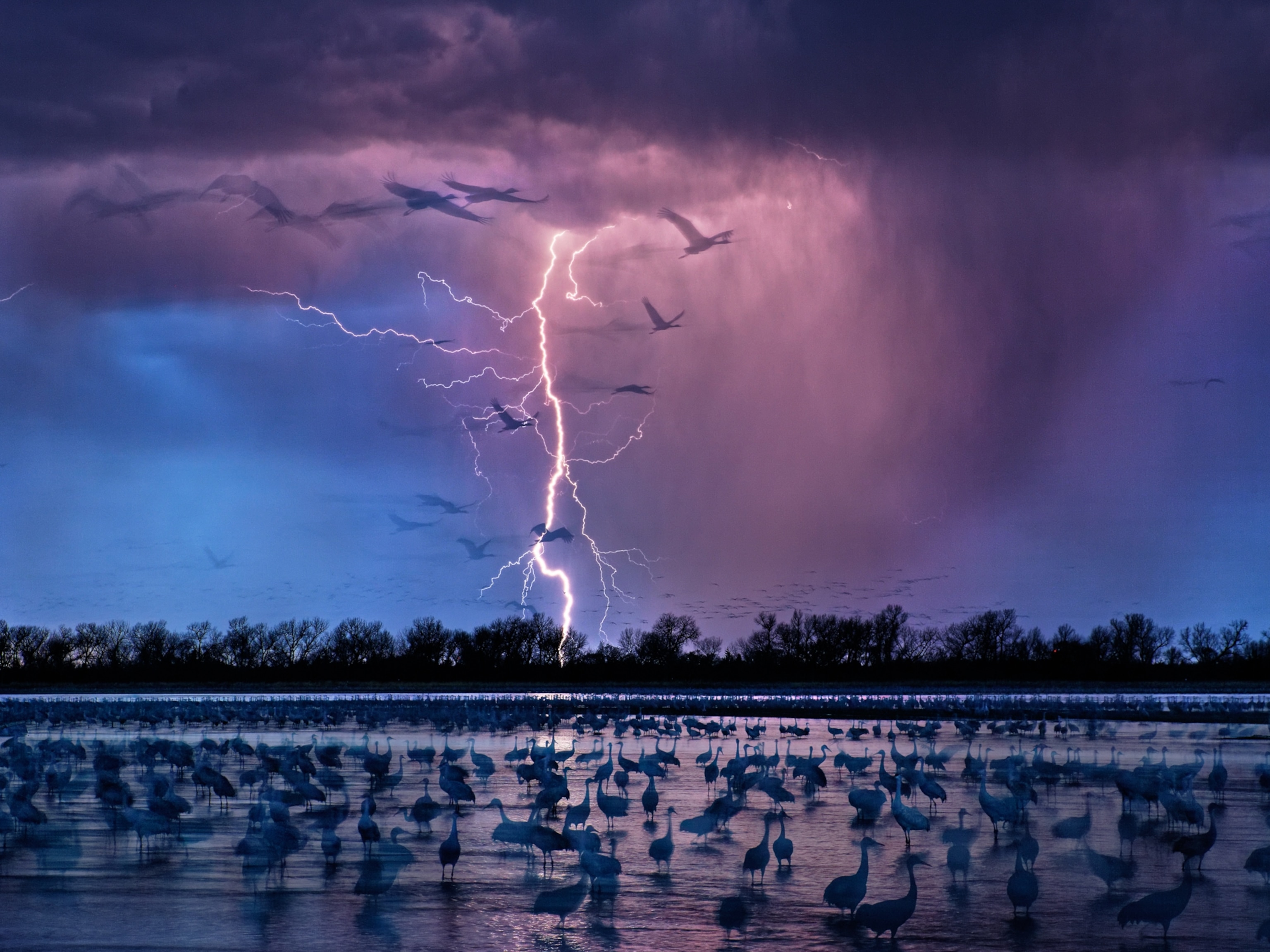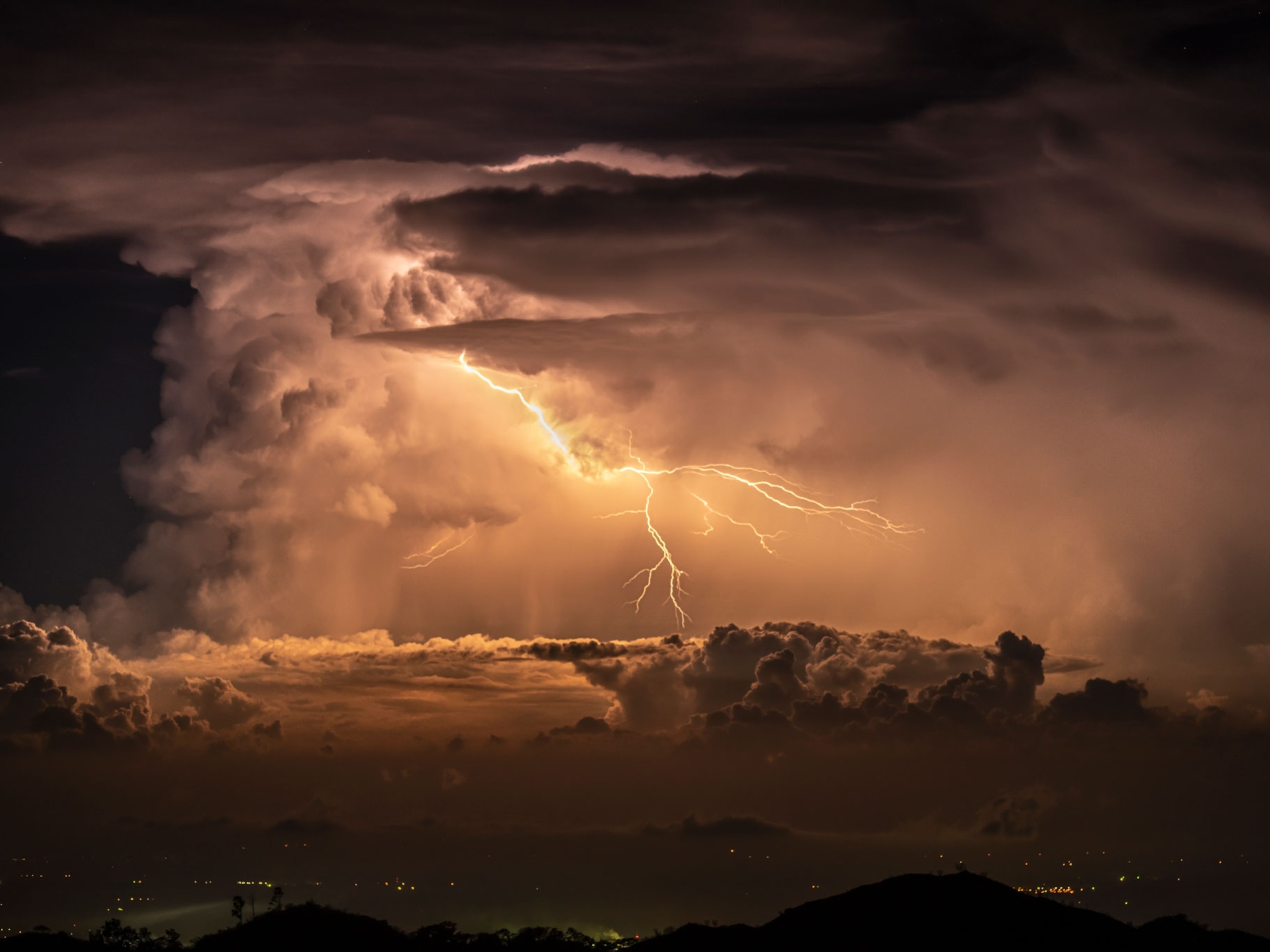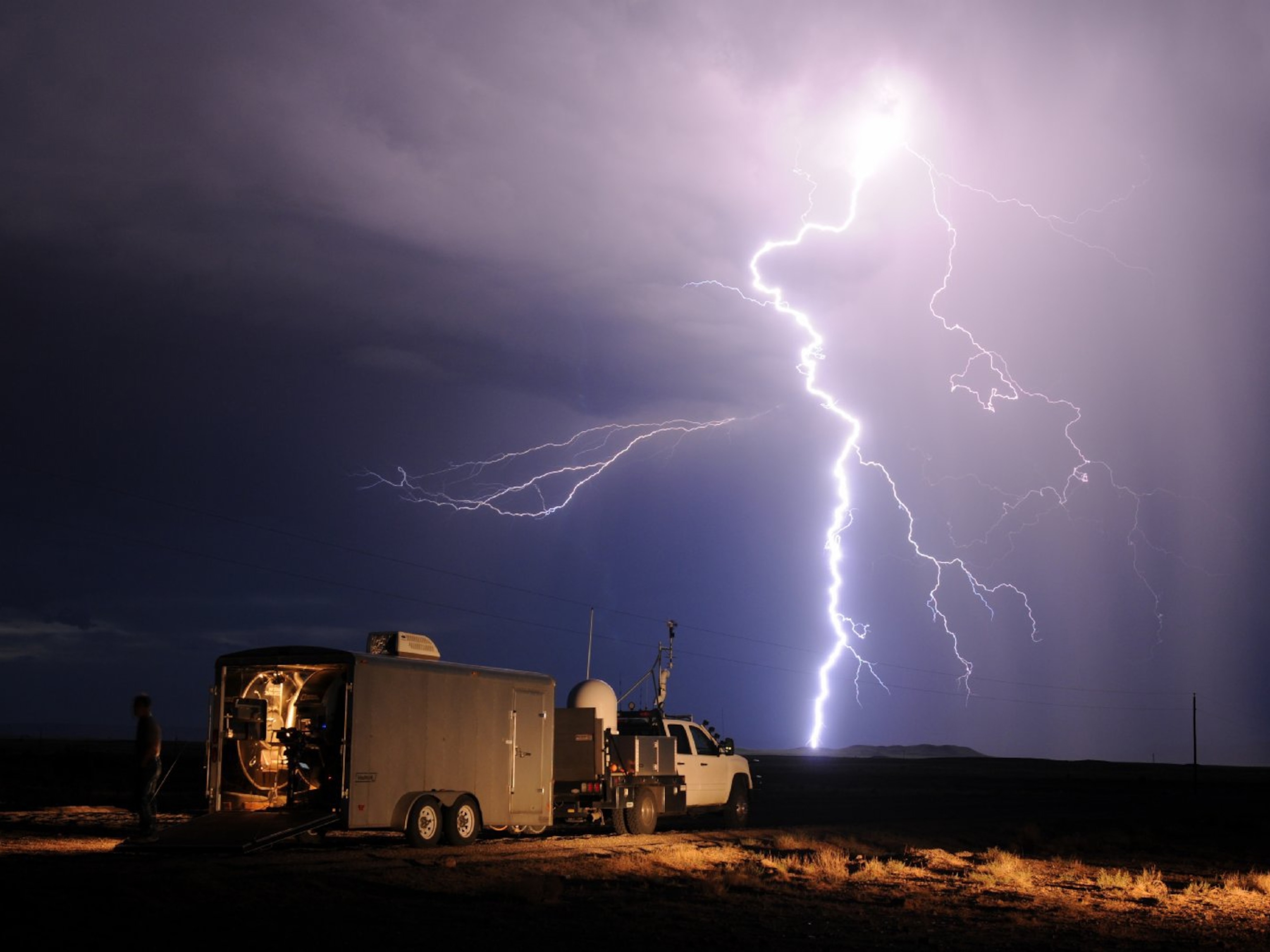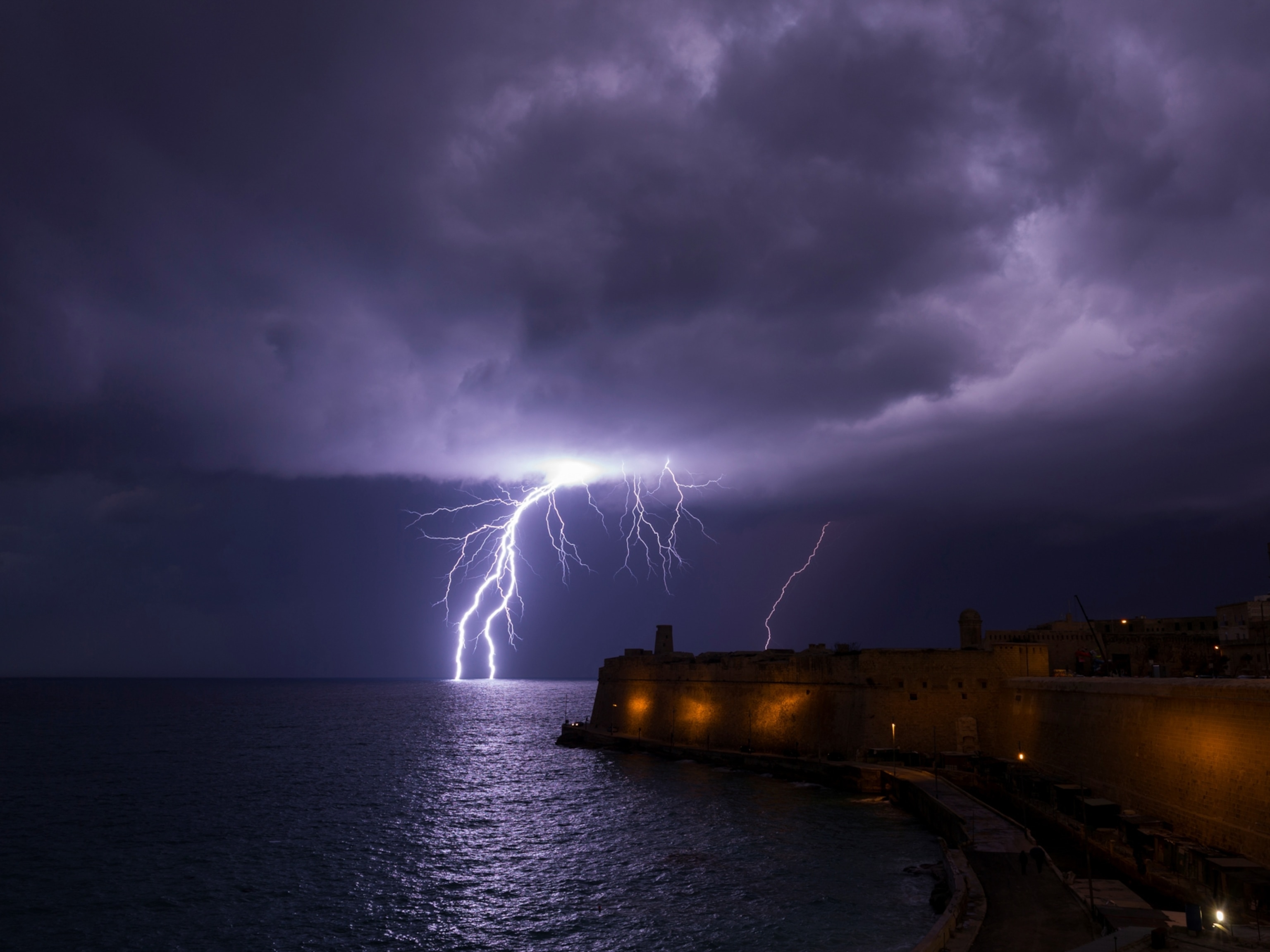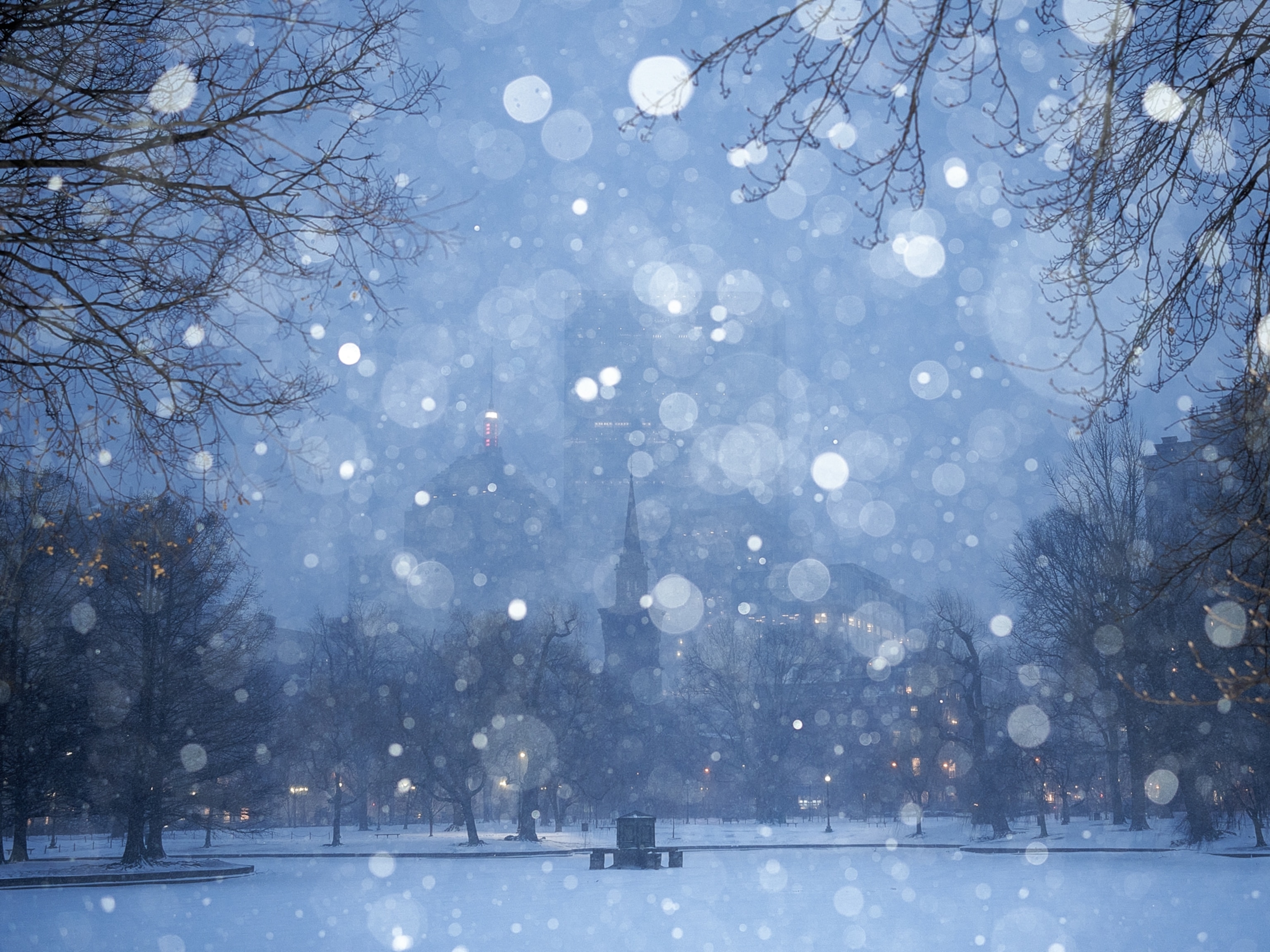
Lightning Safety Tips
Get tips on how to stay safe during a lightning storm at National Geographic.
Lightning kills as many as 2,000 people worldwide every year. Hundreds more people are struck but survive, usually with lingering and debilitating symptoms. Here are some things you can do to avoid electrical storms and decrease your chances of getting struck.
When It Hits
• If you are outside, seek refuge in a car or grounded building when lightning or thunder begins.
• If you are caught outside away from a building or car, stay clear of water bodies and tall objects like trees. Find a low spot or depression and crouch down as low as possible, but don't lie down on the ground. Lightning can move in and along the ground surface, and many victims are struck not by bolts but by this current.
• If you are inside, avoid taking baths or showers and don't wash dishes. Also avoid using landline phones, televisions, and other appliances that conduct electricity.
Once It's Over
• Stay inside for 30 minutes after you last see lightning or hear thunder. People have been struck by lightning from storms centered as far as 10 miles (16 kilometers) away.
